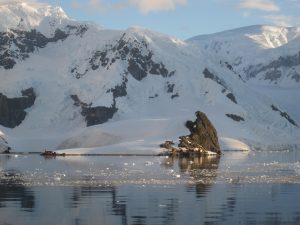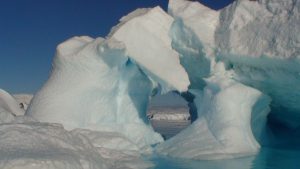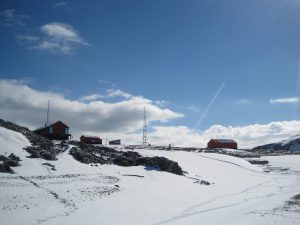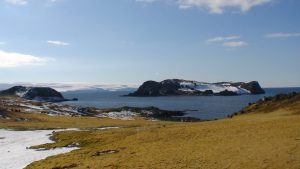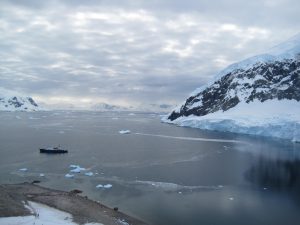
64d 50m 38.1s S, 62s 31m 51.5s W (WP130)
With each excursion into the land of ice and snow, my “ice vocabulary” expanded. We had experienced some sea ice (salt-water ice) and pack ice on the skirts of the Weddell Sea two days ago, and today we got to see “pancake ice” when the sea-ice is just about to freeze, and “brash-ice” which is ice-packs created by the breakup of glaciers (fresh-water) and then recombining in the sea. I was reminded of that story about how the Eskimos have so many words for snow, and now I could understand that. The land of ice is very varied indeed.
We arrived in sheltered Neko Harbour off the Andvord Bay. Another Gentoo rookery met us on the beaches, and we climbed up to the ridge to take in 360 degrees of amazing scenery of glaciers and mountains emerging from the sea, a sea dotted with ice bergs.
After exploring the ground, we did some cruising among the icebergs and enjoyed minutes watching two 40-foot humpback whales spy-hopping (when they poke their nose up) and doing roll-overs. I hope my video came out, but for now below is a sea-monster picture of one of the whales. I did search to find the eye, but alas, it’s lost among all the barnacles. 🙂 It is a good sea-monster picture, tho’.
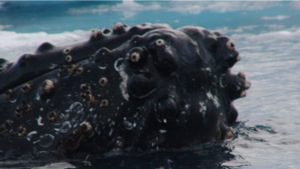
Unnamed humpback whale spotted in Neko Harbor

